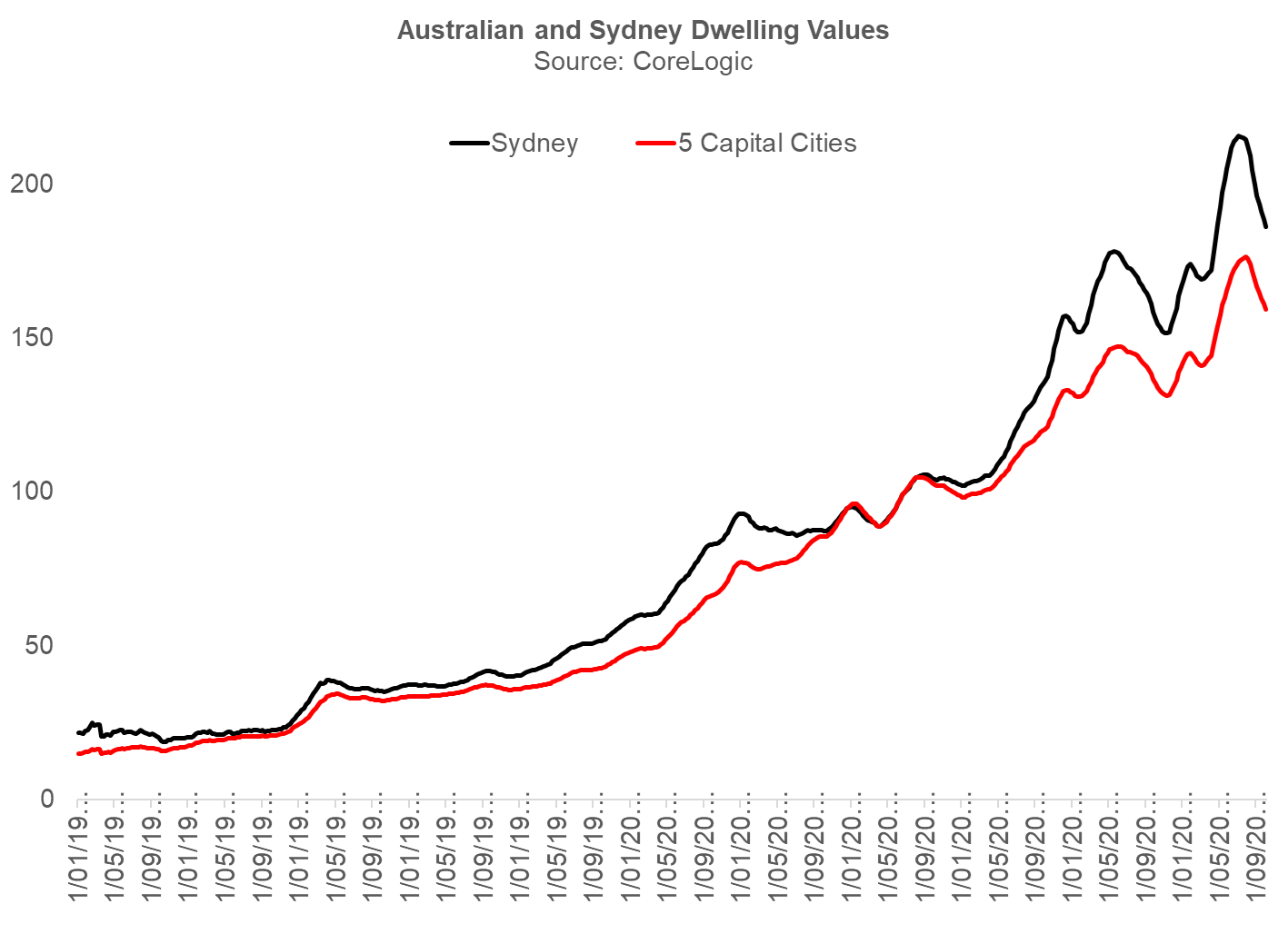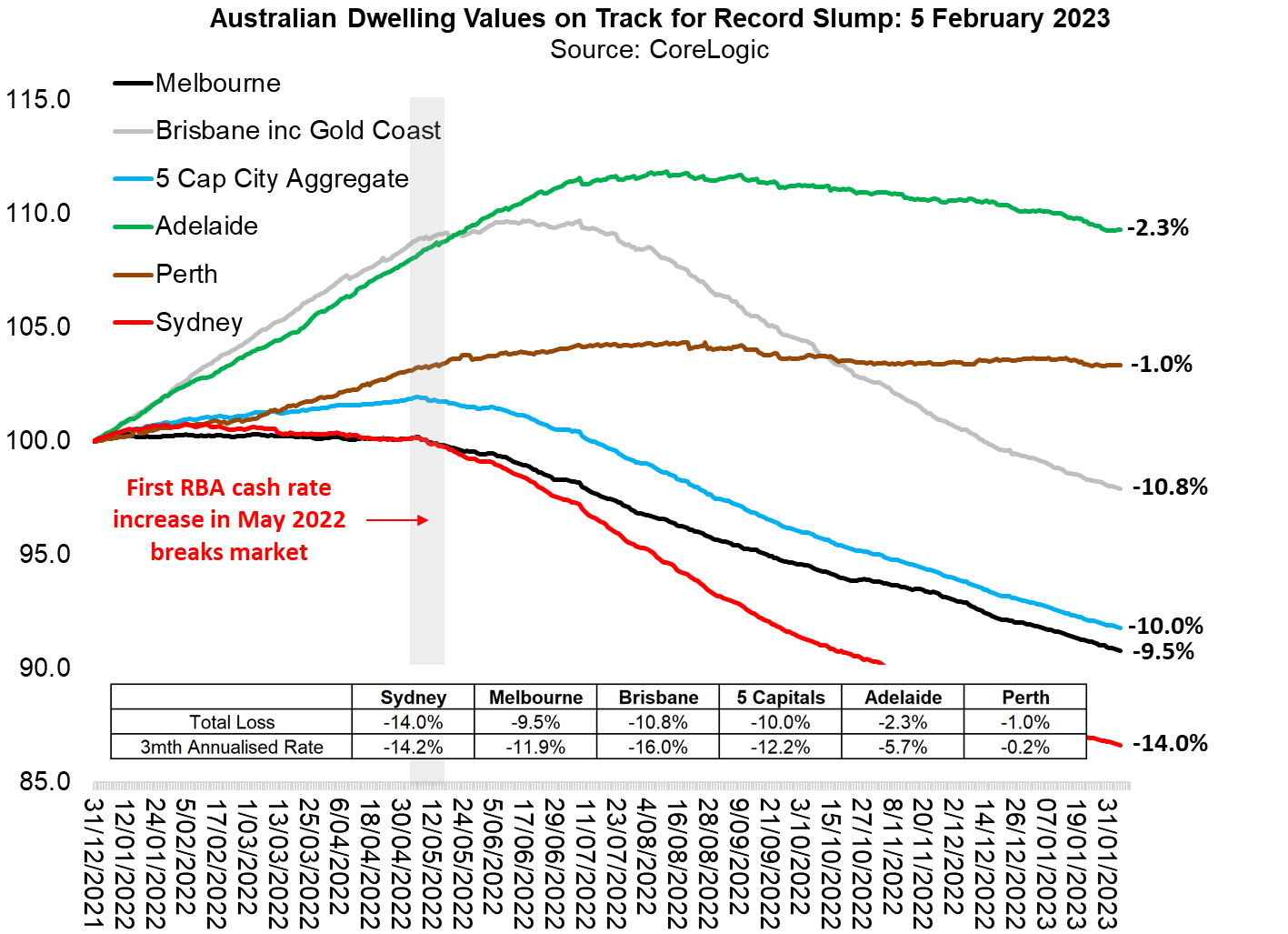Aussie house price losses exceed 10%, Sydney losses breach 14%: 43 year record in sight
So it's official: as a result of the RBA's record interest rate hikes, the great Aussie housing crash has now racked-up a 10% cumulative price decline, just a touch below the all-time, 43 year record of circa 10.7% (between 2017 and 2019) based on data provided by CoreLogic through to 5 February 2023. (This analysis uses the 5 capital city index publicly reported by CoreLogic---one will get slightly different numbers using the 8 capital city index.)
The nation's largest city, Sydney, has suffered a cumulative loss that now exceeds 14%, also a shade below the biggest draw-down since the early 1980s, which was the 14.9% decline registered between 2017 and 2019 (technically, Sydney recorded a loss in excess of 20% in the early 1980s, although one would question the reliability of that data).
Losses in Brisbane have breached 10.8%---and are running at a 16% annual pace based on the last quarter of data---while Melbourne house price declines will soon pass 10% (they are currently sitting at 9.5% and counting).
Using the last 90 days of price changes to 5 February 2023, I have national house prices falling at a 12.2% annualised rate. Assuming the RBA hikes in both February and March, it is hard to see these unprecedented price falls attenuating in the next few months, especially considering that 1-in-4 Aussie home loans switch from fixed-rate to variable-rate in the next 12 months. These borrowers will suffer a huge increase in their mortgage rates from circa 2% to 6% pa.
In October 2021, we forecast a 15-25% peak-to-trough decline in national house prices exclusively as a function of the RBA's hiking cycle. It is likely that the lower bound of this forecast range will be penetrated in the next 5-6 months. I expect the national record for capital city losses to be trashed within the next month.


2 topics

